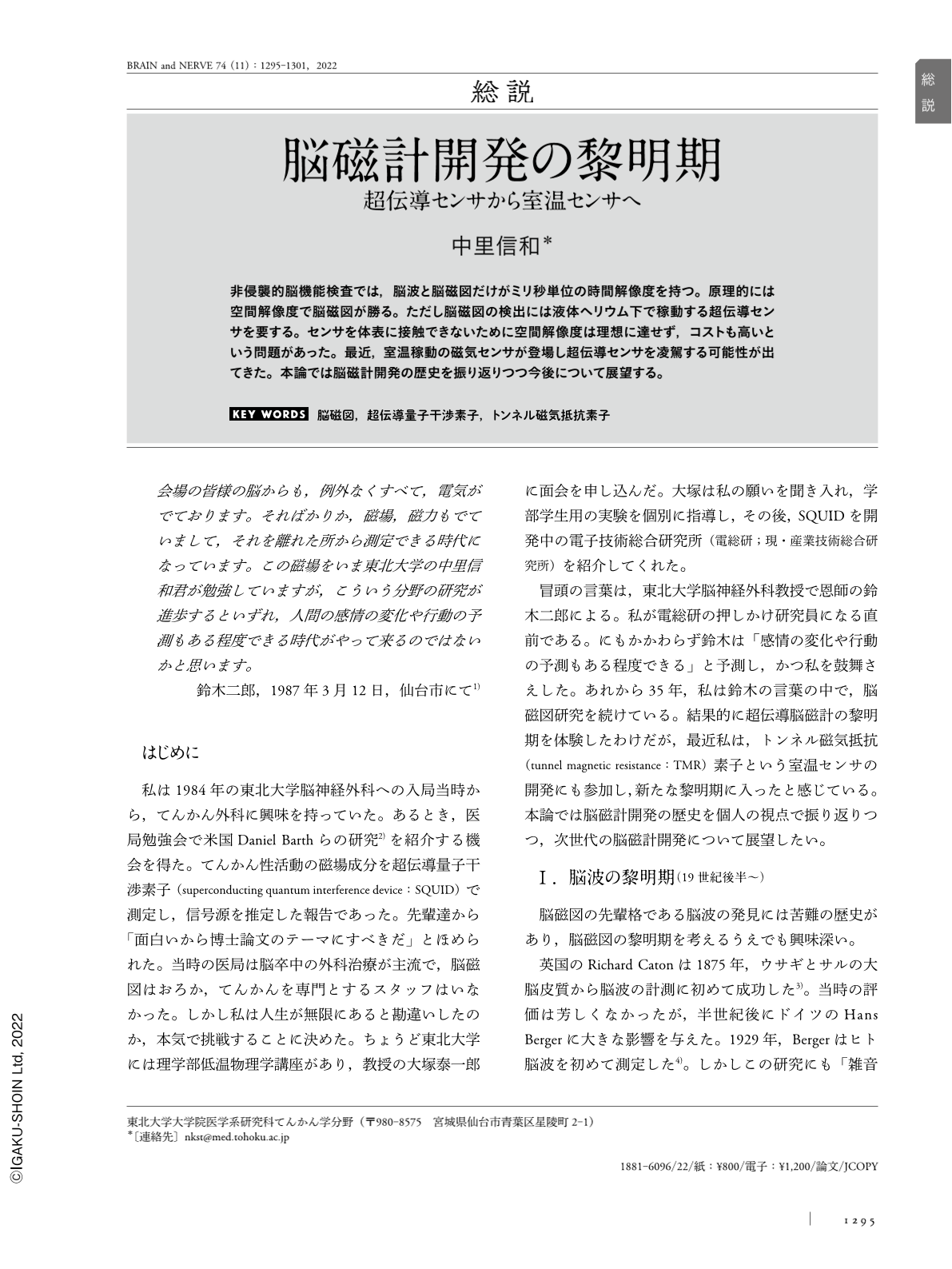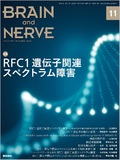Japanese
English
- 有料閲覧
- Abstract 文献概要
- 1ページ目 Look Inside
- 参考文献 Reference
非侵襲的脳機能検査では,脳波と脳磁図だけがミリ秒単位の時間解像度を持つ。原理的には空間解像度で脳磁図が勝る。ただし脳磁図の検出には液体ヘリウム下で稼動する超伝導センサを要する。センサを体表に接触できないために空間解像度は理想に達せず,コストも高いという問題があった。最近,室温稼動の磁気センサが登場し超伝導センサを凌駕する可能性が出てきた。本論では脳磁計開発の歴史を振り返りつつ今後について展望する。
Abstract
Electroencephalography (EEG) and magnetoencephalography (MEG) are the only noninvasive imaging methods of human brain function with temporal resolutions of millisecond-order. MEG has theoretically superior spatial resolution to EEG. However, the weak signal of MEG can only be measured with the superconducting quantum interference device (SQUID). SQUID-MEG equipment has extremely high manufacture and running costs. Moreover, the theoretically high spatial resolution is practically limited by the necessary setback distances between the sensors and scalp, because the Dewar vessel containing liquid helium for the SQUIDs requires a thick vacuum wall. The latest developments in room temperature magnetometers, such as tunnel magnetic resistance (TMR) sensors, may solve the problem of setback distance in MEG scanners. Here I review my personal research history of MEG from the era of single-channel SQUID-MEG to the present era of single-channel TMR-MEG. I also propose the major considerations for the future development of MEG systems.

Copyright © 2022, Igaku-Shoin Ltd. All rights reserved.


